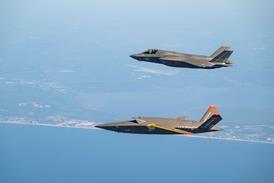Manufacturer sees emerging technologies enabling a step-up in operating economics
ATR is eyeing opportunities towards the end of the decade to challenge in-development regional aircraft programmes.
The Franco-Italian turboprop manufacturer believes technologies emerging in the next few years will allow an aircraft to be developed offering a step change in efficiency and operating economics compared to existing designs.
"Within two to three years there will be new opportunities in terms of engines, structures and avionics," says ATR chief executive Jean-Michel Leonard. "We aim to be ready [to respond] with the help of our shareholders Alenia and EADS," he adds.
Leonard says it will take that long to establish the direction of the business: "The market is continuously evolving, and this process has not been completed yet. In the future it needs to come back to basics - both the aircraft and the structure of the airlines."
ATR delivered 20 new aircraft last year and expects output to continue at similar rates in the near term. Leonard says the current ATR 42/72-500 models will remain unchanged and there is no plan to develop advanced derivatives or a new design in the near term. "To launch now would make no sense - a new turboprop would be very similar to today's aircraft," he says.
ATR has secured its first new aircraft sale of 2002 with Air Tahiti's purchase of one ATR 72-500. The carrier already operates nine ATR 42/72s. The manufacturer also manages around 100 second-hand ATRs, and recently placed six aircraft with four airlines: one ATR 72 with Air Kiribati on the Pacific island of Tarawa; two ATR 72s with a new Canary Islands-based airline Islas Airways; one ATR 42 with Spain's Intermediacion Aerea; and its first aircraft in Malaysia in a two aircraft deal with an undisclosed airline. Three ATR 42 freighters have been placed with Solenta Aviation, South Africa for operation on behalf of DHL.
Source: Flight International























